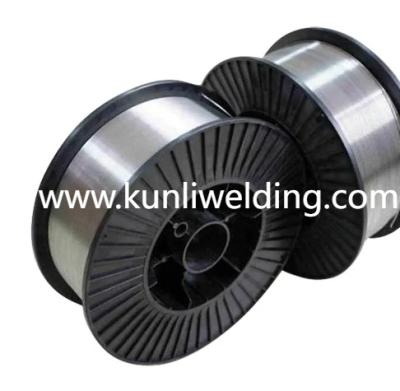Categories
Tags
-
#Aluminum Welding Wire ER5087
#Aluminum Welding Wire Manufacturers
#Kunliwelding Aluminum Welding Wire
#Aluminum Alloy Welding Wire Suppliers
#Aluminum Alloy Welding Wire
#Kunliwelding Aluminum Alloy Welding Wire
#Aluminum Welding Wire ER4943
#China Aluminum Alloy Wire Manufacturers
#Aluminum Mig Wire Manufacturers
#Aluminum Mig Wire
#Kunliwelding Aluminum Mig Wire
#Aluminum Welding Wire
Archives
How Can Packaging Choices Reduce Welding Cell Contamination And
-
Posted by Jason Robby Filed in Technology #Aluminum Welding Wire Manufacturers #Kunliwelding Aluminum Welding Wire #Aluminum Welding Wire 149 views
As markets push toward cleaner production and buyers demand clearer supply chain practices, Aluminum Welding Wire Manufacturers are under new pressure to reduce waste and lower energy use while keeping product reliability high. Manufacturers that adopt greener production steps not only respond to procurement priorities but also help fabricators meet tighter maintenance and lifecycle goals. Practical moves such as reclaimed process water reuse, sealed spool packaging and tighter alloy control reduce environmental impact without adding complexity to welding practice.
One visible change is how manufacturers rethink drawing and spooling to cut scrap. Controlled drawing lines that maintain consistent diameter reduce the chance of feed interruptions in workshops and lower the amount of offcut material that must be recycled. When spool packaging limits moisture pickup fabricators see fewer porosity related repairs and less waste from failed runs. These operational benefits let shops reduce rework and keep production schedules steady while suppliers hit sustainability targets.
Energy management on the shop floor also matters. Firms that adjust furnace cycles and reclaim heat in their processing steps shrink their energy footprint and reduce operating cost volatility. Those investments in process efficiency often result in a more uniform microstructure in the finished wire which in turn supports predictable arc behavior and stable bead geometry in both manual and automated welding. That link between manufacturing practice and downstream performance helps procurement teams make choices that reflect both sustainability and production continuity.
Material lifecycle thinking is emerging as a procurement priority. Choosing wires that yield corrosion resistant deposits and that feed cleanly into common feeders reduces the need for early replacement and lowers the volume of spare parts in inventory. For infrastructure and marine projects where access for maintenance is constrained, longer intervals between interventions translate to lower transport and labor emissions over the product life. Suppliers that present clear handling and storage guidance help integrators preserve joint quality from spool to assembly.
Packaging innovations can have outsized impact. Reusable spool systems and humidity resistant packaging minimize the risk of moisture related defects while cutting single use plastic and paper waste from incoming shipments. When suppliers align spool sizes with common feeder systems, shops spend less time re spooling and more time welding. That operational simplicity reduces congestion at the weld cell and lowers the number of emergency shipments that increase logistics related emissions.
Quality control and traceability are core to sustainable practice. Manufacturers that document batch testing and that provide accessible handling notes give buyers the tools to rotate inventory and avoid unnecessary disposal. Traceable production records also support repair planning by showing which lots performed under specific procedures. This clarity shortens qualification cycles and reduces the trial related waste that can occur when teams test multiple unverified options.
Collaboration between suppliers and fabricators moves the needle. Pilot runs, joint trials and feedback on spool formats help vendors tune their processes and reduce trial scrap. When suppliers respond with practical handling guides and packaging that resists contamination, fabricators adopt better practices faster and waste declines. Those cooperative steps also support resilient sourcing by making it easier to qualify alternate supply without long qualification delays.
Public attention to greener industry and to resilient supply chains is raising expectations across procurement functions. Fabricators that prioritize suppliers with visible sustainability practices and clear technical documentation can reduce downstream waste and maintain steady production as market demands change. If you are comparing wire options and handling notes for workshop integration, supplier product pages include product formats packaging choices and handling guidance that help align procurement with production and lifecycle goals. For product and handling details visit www.kunliwelding.com which lists available wire options and suggested practices that support cleaner production and reliable welding outcomes.
